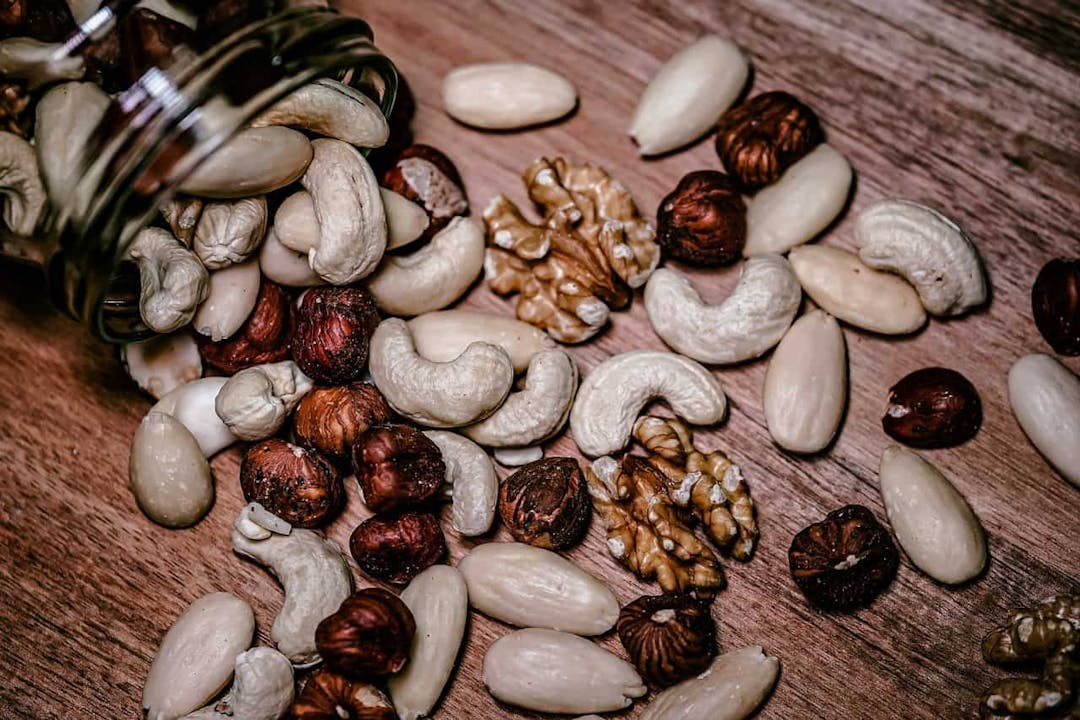


Find foods you can eat.
What’s The Difference Between IBS and IBD?
Published on January 17, 2023Irritable bowel syndrome (IBS) and inflammatory bowel disease (IBD) share similar acronyms and have some overlapping symptoms, but don’t let their names confuse you – IBS and IBD are actually entirely different conditions. How exactly do they differ? What does the diagnosis process look like for each condition? And how do their treatments and dietary approaches vary? As a registered dietitian specializing in gastrointestinal health, I’ll break it all down for you in hopes of clearing up confusion.
What is IBS?
IBS is a chronic functional gastrointestinal disorder, also referred to as a disorder of gut-brain interaction (DGBI). This means that the gastrointestinal (GI) tract functions abnormally, but no inflammation or physical damage to the GI tract is present; therefore, diagnostic tests such as bloodwork, colonoscopies, endoscopies, and X-rays typically appear normal.
Those with IBS have a heightened perception of pain in the internal organs called “visceral hypersensitivity.” This means that those with IBS experience normal gastrointestinal sensations as painful. As a result of nerve activation, abnormal intestinal contractions and bowel motility are also present. IBS can be characterized into one of three subtypes:
- Diarrhea predominant IBS (IBS-D)
- Constipation predominant IBS (IBS-C)
- Mixed IBS (a combination of both IBS-D and IBS-C symptoms)
IBS is considered a syndrome, or grouping of symptoms without a definitive cause, however, abnormalities in nerve signaling between the gut and brain, small intestinal bacterial overgrowth (SIBO), food intolerances, psychological stress, and alterations in the gut microbiome may play a role.
Symptoms of IBS
Symptoms associated with IBS include but are not limited to:
- Abdominal pain and cramping
- Diarrhea, constipation, or alternating bouts of both
- Incomplete evacuation
- Bloating
- Gas
Diagnosing IBS
IBS is typically a diagnosis of exclusion meaning other conditions must be ruled out first. A gastroenterologist will review your medical history and current symptoms, perform a physical exam, and order various diagnostic tests to rule out conditions with overlapping symptoms. Once other conditions can be ruled out, your doctor may use the Rome IV criteria to make an IBS diagnosis. To meet these diagnostic criteria, you must experience two or more of the following symptoms, associated with recurrent abdominal pain one or more days per week, in the last three months on average:
- Increasing or improving abdominal pain related to bowel movements
- Changes in stool frequency
- Changes in stool form or appearance
Irritable Bowel Syndrome diets
Those with IBS may benefit from a number of dietary adjustments. It’s best to start with the least restrictive approach, only moving to a more restrictive diet if you are still experiencing disruptive symptoms. Some of the first-line dietary approaches for IBS may include but are not limited to:
- Limiting caffeine, alcohol, spicy foods, and portions of fat eaten within one sitting
- Increasing the soluble to insoluble fiber ratio in the diet or incorporating a soluble fiber supplement
- Implementing regular meal and snack patterns
- Incorporating foods that promote bowel motility, such as ground flaxseed and green kiwi
- Magnesium supplements
- Supplementing specific digestive enzymes, such as lactase and alpha-galactosidase pills
- Supplementing with certain probiotic strains
IBS what foods to eat
If an individual is unable to find symptom relief through less restrictive dietary approaches, they may be a good candidate for the low-FODMAP diet. This is a dietary protocol which temporarily restricts types of carbohydrates that are highly fermentable by gut bacteria. The idea is that high-FODMAP foods are avoided for a few weeks and then systematically reintroduced to determine an individual’s tolerance to different FODMAP categories. Modified versions of the low-FODMAP diet can also be used, which may only restrict certain high-FODMAP foods or categories. The Fig app is a great tool for starting the Low FODMAP diet.
Alternative and Lifestyle Approaches for IBS
Lifestyle practices such as regular physical activity, optimizing sleep quality, ensuring proper hydration, and incorporating stress reduction techniques may aid in IBS symptom management. Additionally, certain alternative therapies may be helpful, which include pelvic floor physical therapy and psychogastroenterology techniques like gut-directed hypnotherapy.
Medical Treatments for IBS
For individuals whose IBS is not adequately controlled through dietary and lifestyle modifications, over-the-counter and prescription medications are available to aid in symptom management. They include anti-diarrheal medications, laxatives, antispasmodic medications, selective serotonin reuptake inhibitors (SSRIs), and tricyclic antidepressants.
What is IBD?
IBD is a structural disease, meaning it causes inflammation and physical damage to the GI tract. More specifically, IBD is an autoimmune disease, in which the immune system mistakenly attacks the GI tract. The two most common forms of IBD are:
- Crohn’s disease: any portion of the GI tract may be affected, from the mouth to the rectum, and all layers of the intestinal walls can be involved. Crohn’s typically occurs in a skip pattern, causing “skip lesions.” This means that there are often healthy sections of intestine in between inflamed areas, rather than continuous inflammation throughout the GI tract.
- Ulcerative colitis (UC): affects the inner lining of the colon, rather than the entire GI tract. Unlike Crohn’s, ulcerative colitis is characterized by a continuous inflammation pattern.
Severity of Crohn’s and ulcerative colitis can vary from mild to severe. Both are considered chronic conditions, characterized by periods of active inflammation, or “flare ups,” and periods of remission, without active disease. The cause of IBD is not entirely understood, however, experts believe that a combination of genetic and environmental factors are likely involved.
Symptoms of IBD
Symptoms associated with IBD include but are not limited to:
- Abdominal pain
- Diarrhea
- Blood in stool
- Bloating
- Nausea and/or loss of appetite
- Weight loss
- Nutrient deficiencies
- Fatigue
- Fever
Additionally, some IBD patients may develop inflammation or complications in other parts of the body such as the joints, skin, eyes, bones, liver, and kidneys, which are referred to as “extraintestinal manifestations.”
Diagnosing IBD
A gastroenterologist may order a number of tests to make an IBD diagnosis. Typically, a complete blood count (CBC) and fecal calprotectin stool test are ordered first, to check for signs of inflammation in the blood and intestinal tract. Next, a colonoscopy or flexible sigmoidoscopy, an upper endoscopy or capsule endoscopy, a CT scan, and/or an MRI may be performed to confirm or refute an IBD diagnosis and differentiate between Crohn’s disease and ulcerative colitis.
IBD Diets
Most individuals with IBD require medication to induce and maintain remission, however, dietary adjustments play a significant role in symptom management, maintaining remission, and improving quality of life. Historically, IBD patients were often advised to avoid or limit high fiber foods, such as raw fruits and vegetables, nuts, seeds, and whole grains, in order to minimize irritation to the gut lining. Today, research demonstrates the importance of fiber in promoting a healthy gut. For most individuals with IBD, it is far more beneficial to modify the textures of fiber-rich foods before consuming them for easier digestibility, rather than avoiding them entirely. By blending, pureeing, steaming, and sautéing fiber-rich foods, they become “pre-digested,” and are likely to go down smoothly. In certain situations a low-fiber diet may be recommended temporarily, but for most, it is not recommended to follow a low-fiber diet for a prolonged period. Low-fiber diets may negatively impact the health of the gut long-term and many highly nutritious foods are high in fiber, therefore nutrient deficiencies may develop.
When in remission, those with IBD generally do not need to continue to modify the texture of their food, and most individuals are able to resume their typical diet without provoking symptoms. That said, research demonstrates benefit in including foods high in prebiotic fiber, fermented foods rich in probiotics, and foods rich in omega-3 fatty acids to encourage a healthy gut microbiome, promote overall health, and lower inflammation. Additionally, certain food additives such as maltodextrin, carrageenan, polysorbate-80, and carboxymethyl cellulose have been associated with intestinal inflammation, therefore it may also be beneficial for those with IBD to avoid consuming them. You can scan foods at the grocery store with the Fig app to check for these ingredients.
There are many therapeutic diets used for IBD, however it is important to note that these diets have varying degrees of scientific evidence to support their efficacy, and may not be safe or appropriate for certain individuals to follow. If you are interested in trying a specific diet, you should seek guidance from a GI-specialized registered dietitian.
Crohn’s Diets
Some of the more common therapeutic diets used for Crohn’s and IBD include but are not limited to:
- The Specific Carbohydrate Diet (SCD): a grain-free diet low in sugars (including lactose), starches, and processed foods.
- The IBD Anti-inflammatory Diet (IBD AID): developed by the UMass Chan Medical School Center for Applied Nutrition and derived from the SCD, updated to take into account current research supporting the inclusion of prebiotic and probiotic food sources to encourage a healthy gut environment.
- Exclusive Enteral Nutrition (EEN): a diet in which the individual receives nutrition exclusively from a nutrition formula, either orally or through a feeding tube for 6-8 weeks.
- Crohn’s Disease Exclusion Diet (CDED): a three-phase diet that centers around minimally processed, whole foods and excludes foods and food additives thought to negatively impact the gut microbiome. The CDED is combined with enteral nutrition formula, gradually decreasing reliance on formula with the progression of each phase.
Other dietary approaches include adoption of a Mediterranean-style diet, semi-vegetarian (lacto-ovo) diet, and eliminating specific foods, depending on an individual’s tolerance and symptoms.
You can use the Fig app to help you follow the above diets or to avoid any unique ingredients that personally trigger your symptoms.
Medical Treatments for IBD
Medications commonly prescribed for IBD range from anti-inflammatory drugs called 5-ASA drugs, to immune modulators which suppress the immune system, biologic infusions and injections as well as JAK inhibitors which block inflammatory proteins, and corticosteroids, which are used for short periods of time to quiet flares. Some individuals with IBD may require surgical treatment to remove portions of the intestines that are severely damaged.
Symptoms of IBS vs IBD
IBS and IBD share some overlapping symptoms, such as abdominal pain, bloating, and diarrhea. Additionally, it is possible to have both IBS and IBD at the same time. GI symptoms do not always indicate the presence of inflammation, so if you have IBD and are in remission but still experience symptoms such as abdominal pain and bowel irregularities, this may be attributed to overlapping IBS rather than your IBD. It’s important to speak with your gastroenterologist to best determine the cause of your symptoms. Additionally, both IBS and IBD may be worsened by psychological stress, and both conditions are most commonly diagnosed in adolescence through early adulthood.
Differences Between IBS and IBD
One of the distinct differences between IBS and IBD is that IBD is more commonly associated with weight loss, malabsorption, and nutrient deficiencies. While it is certainly possible for those with IBS to develop weight loss and nutrient deficiencies, it is less common. Additionally, these symptoms are unlikely to occur as a direct result of IBS, but rather as a result of avoiding certain foods, consuming a limited diet, reducing portion sizes, or skipping meals in an effort to mitigate IBS symptoms. For those with IBD, weight loss and nutrient deficiencies can occur as a result of the disease process, such as malabsorption, blood loss, and increased metabolic needs. Those with IBD may also develop fevers during flare ups, inflammation in other parts of the body, and lose blood through their stool, which is not the case for IBS.
In addition to immediate differences in symptoms, there are also differences in the long-term effects of IBS and IBD. Those with IBD are at increased risk for developing osteopenia or osteoporosis overtime, due to a combination of side effects from commonly-prescribed medications required to treat IBD (such as corticosteroids), malabsorption, and reduced calcium intake, all depending on the individual’s disease location, severity, and diet. Additionally, those living with IBD for 8-10 years or longer are at increased risk for developing colon cancer, therefore it is important to receive regular colonoscopies for screening, as recommended by your doctor.
The Bottom Line
IBS and IBD have many distinct differences, requiring unique dietary and medical treatment approaches. That said, it is important to recognize that it is possible to have both IBD and IBS concurrently, and that both IBS and IBD can significantly impact one’s quality of life. It’s helpful to work with your gastroenterologist and a GI-specialized registered dietitian to develop the best treatment plan for you and your specific needs. The Fig app is also available to help you follow complicated diets for IBS and IBD – or to avoid any specific ingredients that trigger your symptoms.
 How to support friends and family who have dietary restrictions
How to support friends and family who have dietary restrictions Low FODMAP Nuts and Nut Butters
Low FODMAP Nuts and Nut Butters